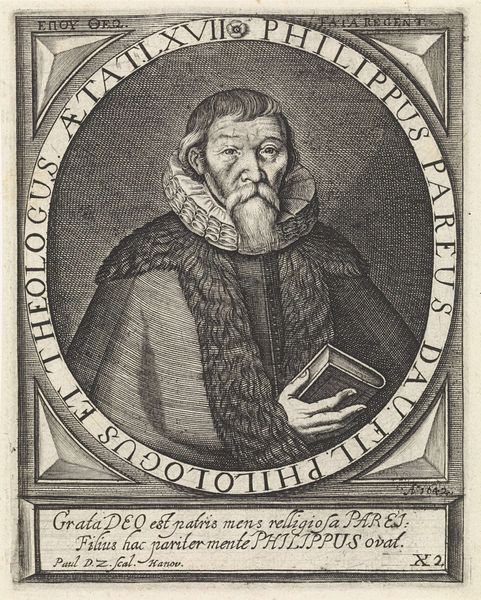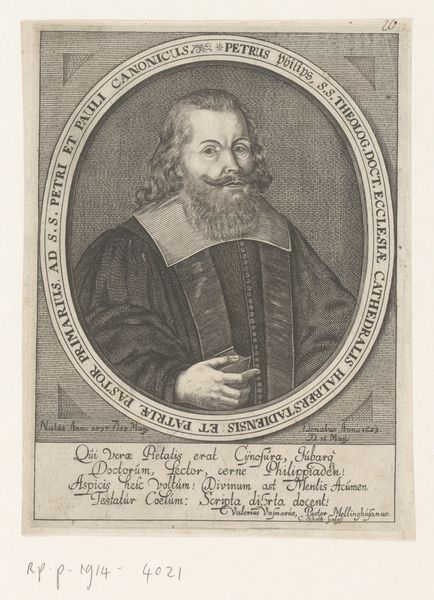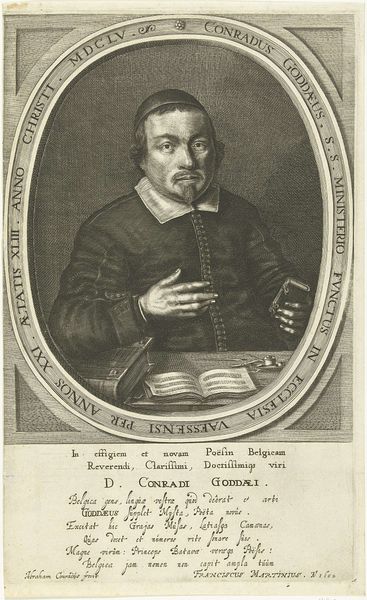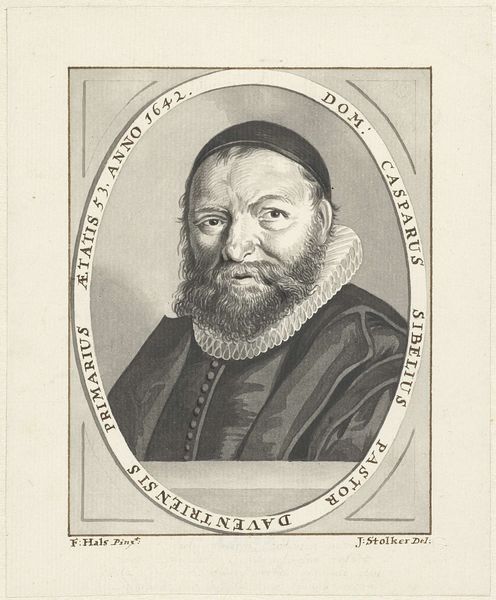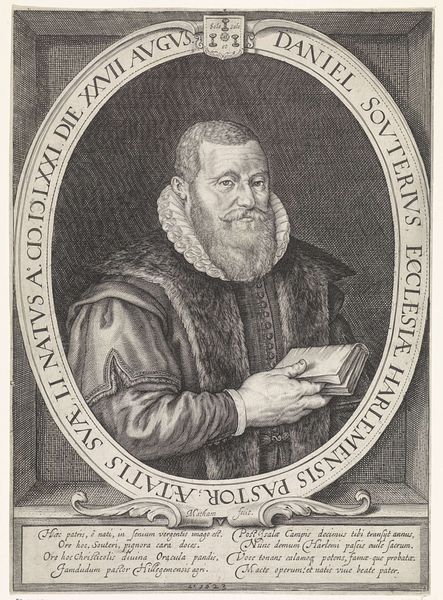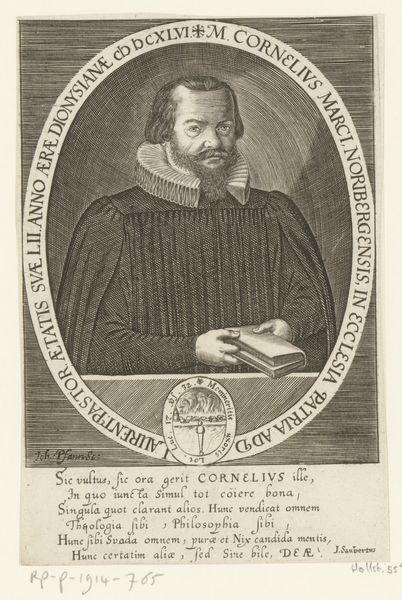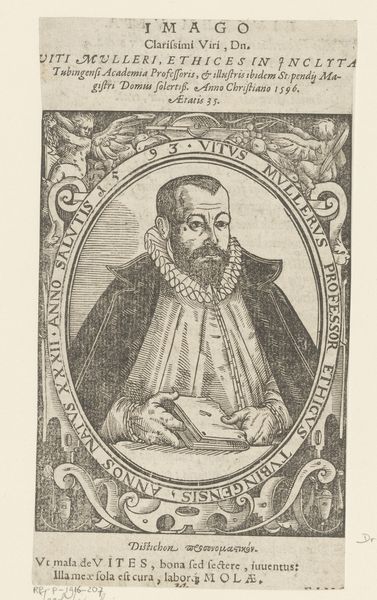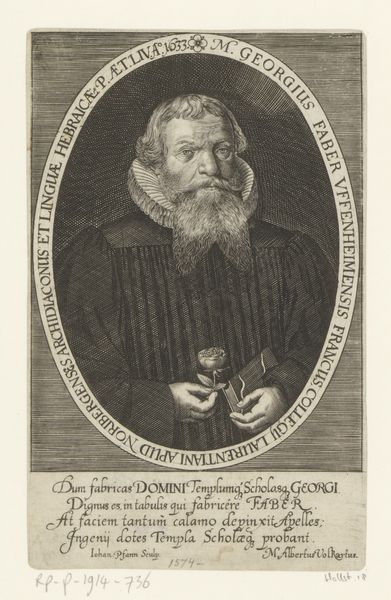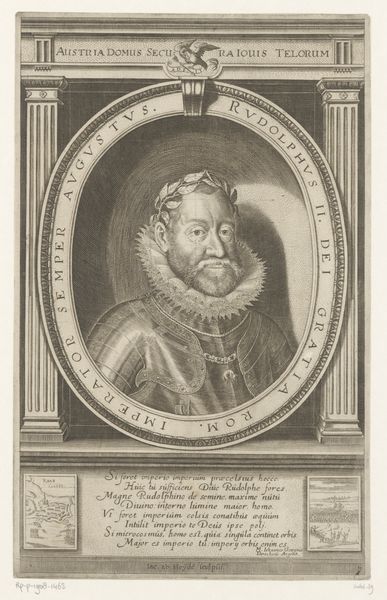
print, engraving
#
portrait
#
baroque
# print
#
old engraving style
#
caricature
#
history-painting
#
engraving
Dimensions: height 138 mm, width 105 mm
Copyright: Rijks Museum: Open Domain
Curator: Here we see the "Portret van Paul Toussaint", a print made in 1629 by Paul de Zetter. What strikes you upon seeing it? Editor: There's an immediate gravity, an almost haunting intensity in the sitter's gaze. It reminds me of those old, wise archetypes found in folklore. His eyes especially have this unnerving directness. Curator: I see what you mean, though it's worth considering the historical conventions of portraiture. Seventeenth-century portraiture often presented men in a manner intended to project authority. The trappings of that identity deserve close consideration; we can interrogate whether those conventions still track for modern audiences. Editor: Agreed, and that is a worthy task. Yet beyond social constructs, the image holds a strong symbolic resonance, I believe. He's holding a book—clearly he is literate, learned, or a clergyman maybe. The lettering surrounding his image further frames him. Curator: Paul Toussaint was indeed a theologian. It's interesting how the framing mirrors, to me, the pressures of theological discourse at that time. Religious figures existed within a very narrow ideological context, not unlike this framed setting, a visual construct. Editor: Ah, now that’s something. I had noticed his somewhat weary expression; his eyes are ever so slightly puffy. It mirrors a kind of weightiness or a deep reflection…perhaps even melancholy that might stem from the immense gravity surrounding scripture. Curator: Considering his position, one can't overlook the religious and political climate of the time. To what extent were his intellectual pursuits in line with—or, conversely, rebelling against—the dominant societal structures? This would speak to how we understand his image. Editor: Certainly food for thought, isn’t it? It serves as a powerful reminder that a single image is not simply an object of aesthetic value; it is a window into past and enduring struggles. Curator: Absolutely. By bridging historical context with symbol recognition, we achieve a fuller experience of the work and its lasting implications for cultural thought.
Comments
No comments
Be the first to comment and join the conversation on the ultimate creative platform.
